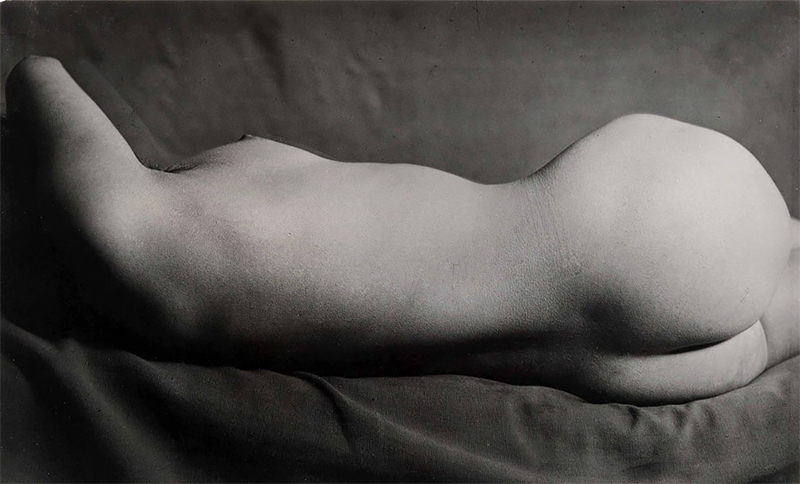The naked body has, since ancient times, fascinated artists of all backgrounds. Sculptors, painters and illustrators competed to celebrate the body and represent it in its original state, as evidenced by the works from ancient civilizations, notably Egyptians, Greeks and Romans. Prehistoric representations of the naked human body can even be seen on the painted walls of caves and prehistoric statuary art. But if masculine nudes prevailed in Antiquity, especially among the Greeks, the trend has now shifted and it is the female body that has become the ultimate muse for artists.
The beginnings of nude photography
An inexhaustible windfall due to its beauty, its singularity and its perception of the materialization of the soul, the naked body has never ceased to inspire photographers since the invention of photography in 1839. Hippolyte Bayard, one of the inventors of the technological prowess which made it possible to create images without the action of the hand, was the first to stage a naked body... actually his own! This self-portrait, entitled The Drowning, was shot in 1840, less than a year after the invention of the technique. Because of its ironic title, this image can be considered as the first staged photograph
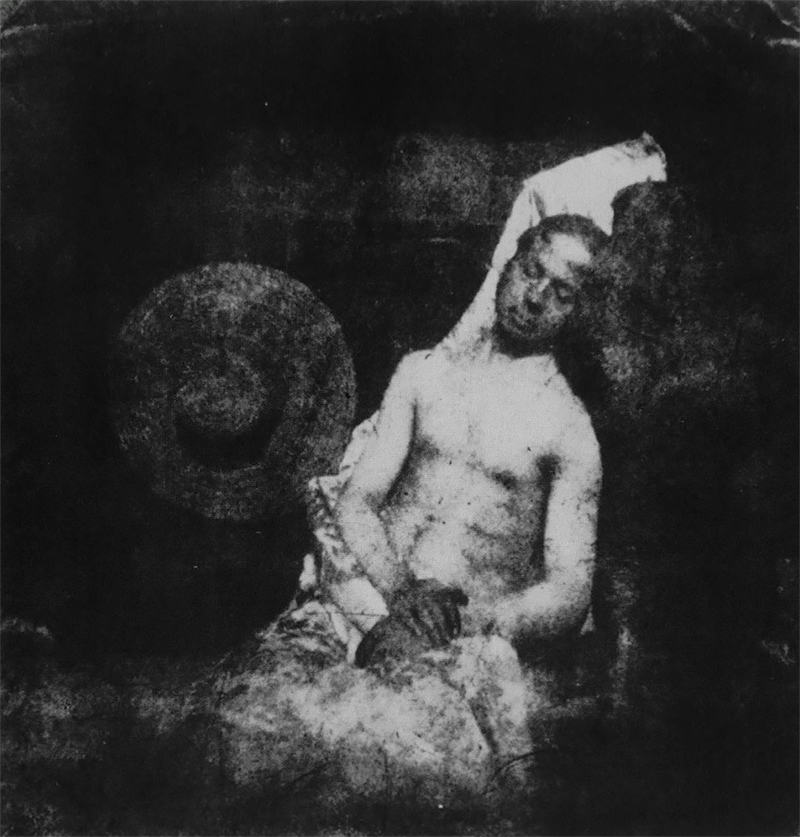
© Self-Portrait as a Drowned Man, Hippolyte Bayard 1840
Contemporary artists used nude photography as sketches for their paintings and drawings. Measurement on the photograph itself helped the painter to reproduce them on a larger canvas. Anonymous daguerreotypes showed naked or lightly clothed women, who would eventually be the subject of a painting. The photographs obtained at that time were carefully kept away from inquisitive eyes, from fear of censorship but also theft.
The photographers then called on prostitutes, because people of good moral character refused to pose naked for pictures, and for good reason. Nude photography has long been assimilated to a sub-genre of eroticism, no doubt because it mainly depicts naked women.
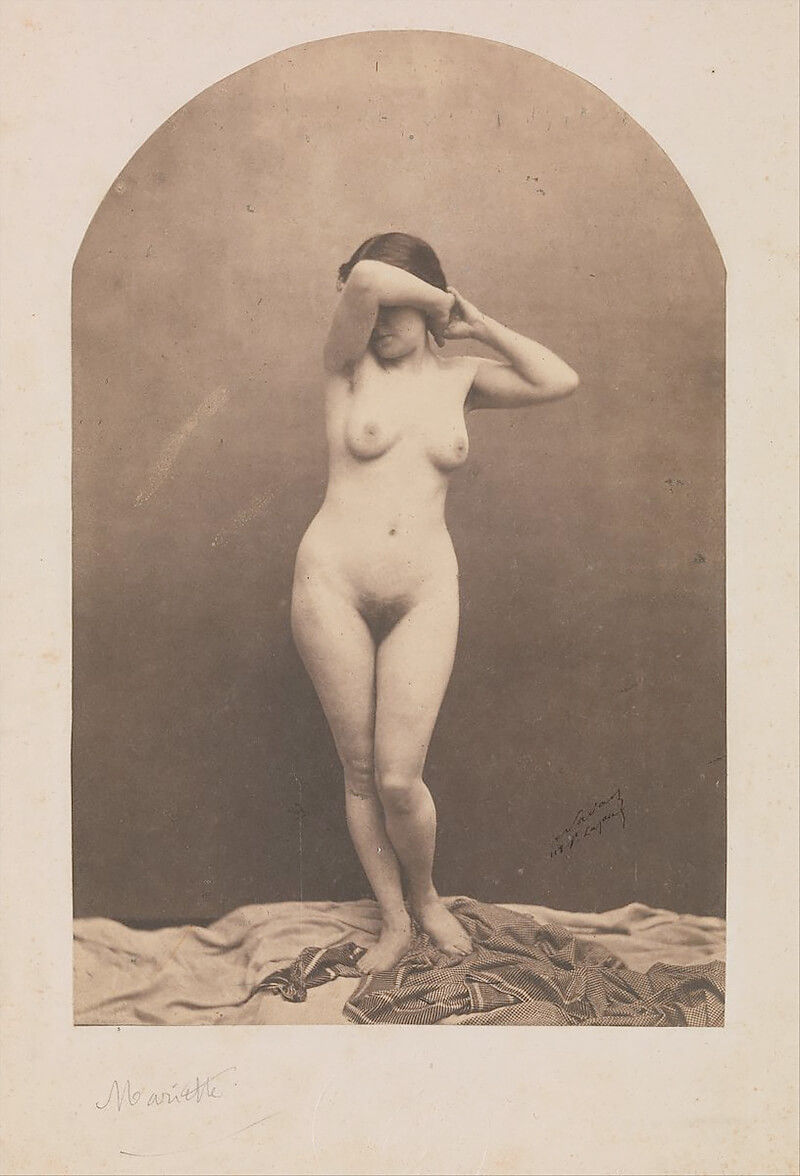
Standing Female Nude 1860-61, Nadar
Source: The MET
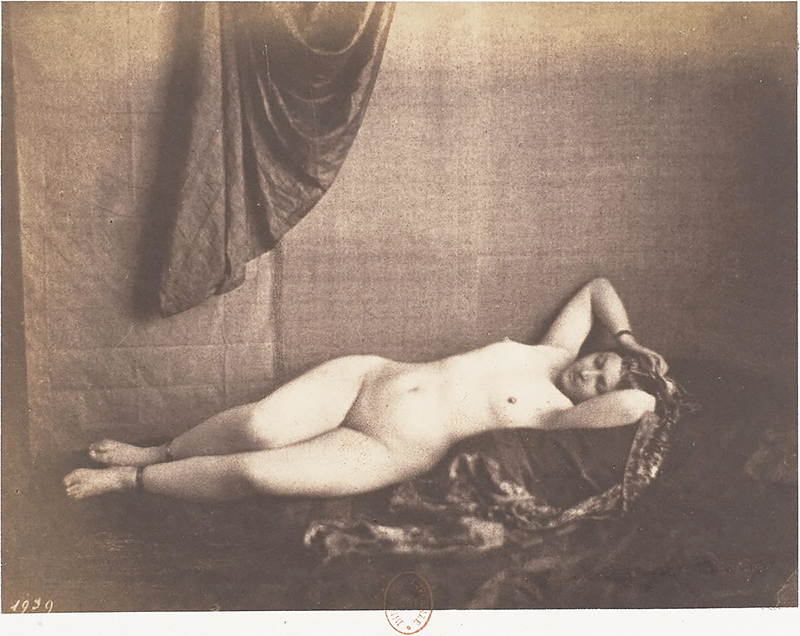
Reclining Nude 1851-53, Julien Vallou de Villeneuve
Source: The MET
For a long time, the only nudes authorized for publication were those who accompanied the accounts of explorers and travelers, especially in colonial times. Photos of more or less naked natives illustrated the pages of prestigious journals like National Geographic or those of certain textbooks. It was then essentially and officially about touting the superiority of our civilizations over those of the savages that could be found in various regions of the globe. However, not all shots of this kind were innocent, far from it. These nudes who did not dare to say their names, as well as the reproductions of paintings which could be found in the great dictionaries, contributed to the education of several generations of adolescents, at a time which on the whole was rather puritanical and strait-laced.
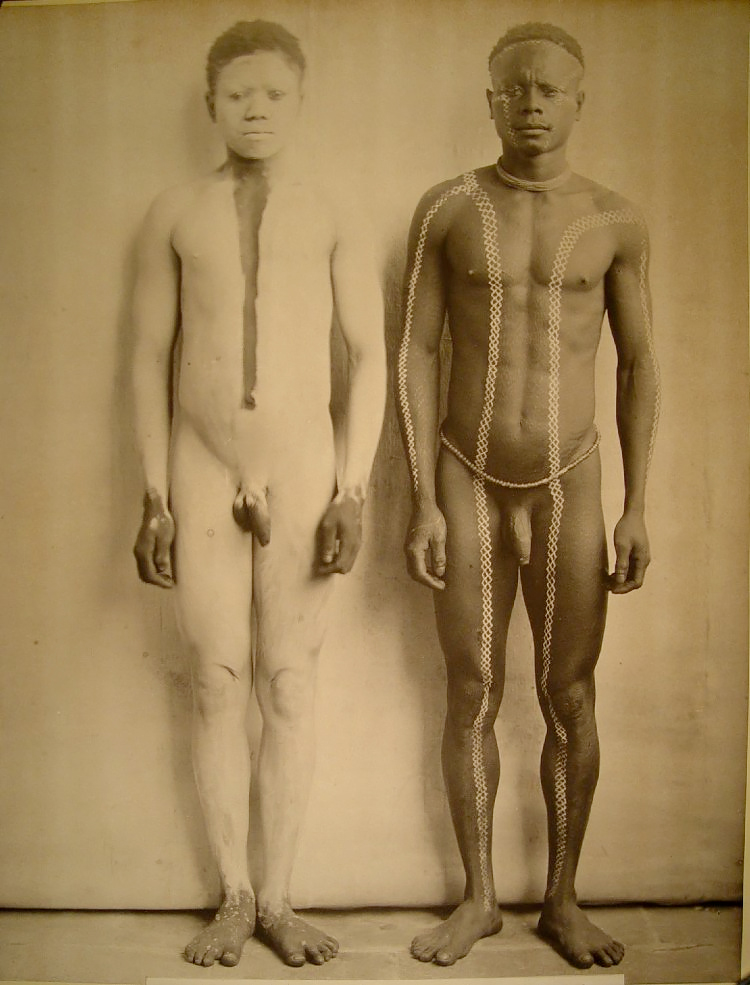
As photography continued to develop, the interactions between painting and photography became increasingly reciprocal. More than a few pictorial photographers, including Alvin Langdon Coburn, Edward Steichen, Gertrude Käsebier, Oscar Gustave Rejlander, and Sarah Choate Sears, were originally trained as painters or took up painting in addition to their photographic skills.
Between 1890 and 1914, pictorialism occupied a pivotal place in the history of photography: derived from the term picture, this movement was created with the idea of bringing photography among the 'fine arts'. The development around 1880 of new smaller and simplified cameras, put within the reach of a large public of amateurs the process developed by Daguerre. Struggling against the standardization of the photographs which occurred from this technical revolution, a category of amateurs from the bourgeoisie tried to develop their own photographic aesthetics and to place the artistic act at the very heart of the practice of photography. Behind this ambition, it was a question of proposing another image of reality, by privileging the sensitivity of the artist-photographer.
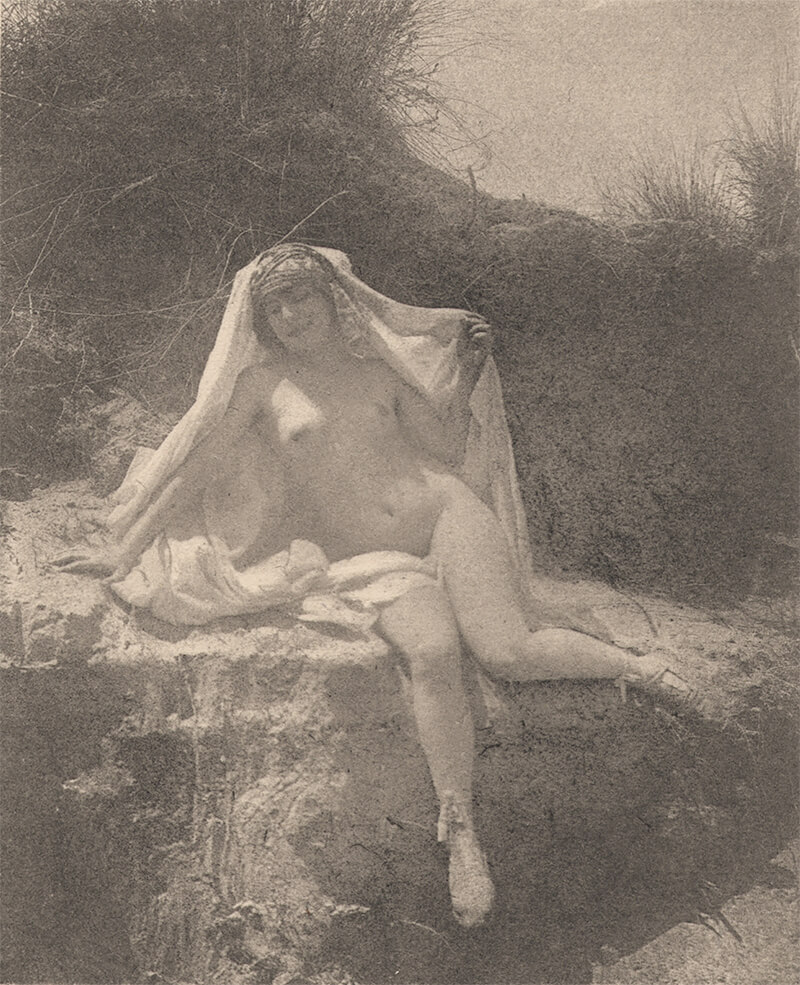
Nude on Beach, 1900-1920 (ca) © Emile Joachim Constant Puyo
Source: MOCP
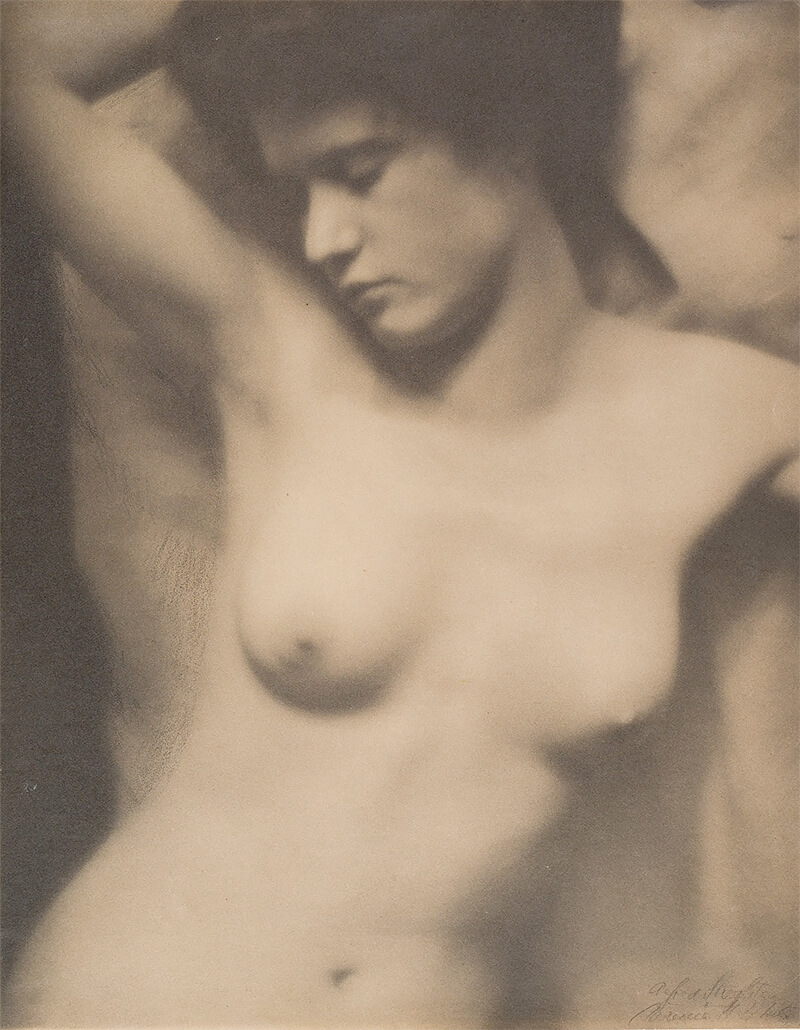
Torso, 1907 © Clarence H. White and Alfred Stieglitz
Source: Spencer Alley
The first decades of the twentieth century saw radical changes in societal attitudes. The reasons are diverse. Medical breakthroughs, WWI, the evolution of fashion and dance, the expansion of illustrated magazines and advertising... The combination of these technological and cultural evolutions helped photographers think differently their approach to the human body. At first they decided to capture the body in segments, to take close-ups.
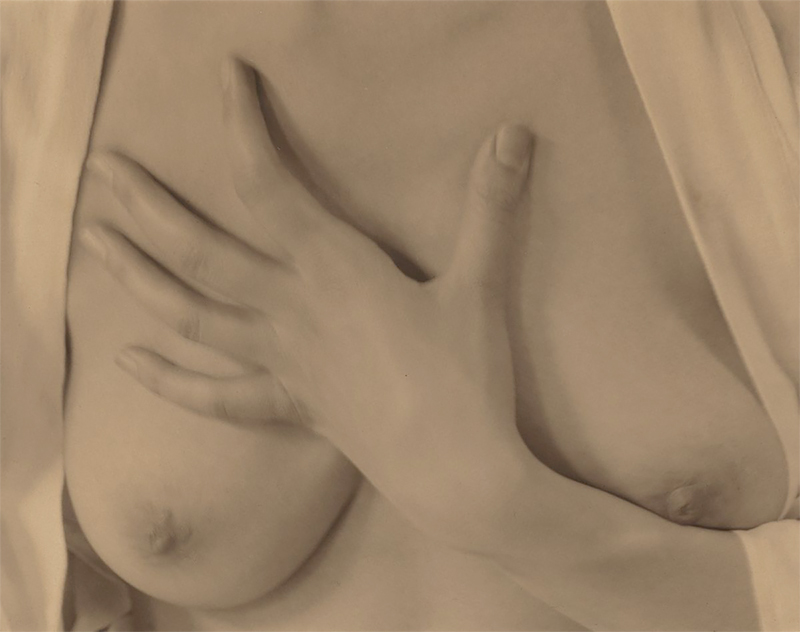
Georgia O’Keeffe, Hands and Breasts, 1919 © Alfred Stieglitz Courtesy of Alfred A. Knopf
In the mid-20th century, in an attempt to avoid the censorship that prevailed in a prudish society, a handful of magazines had the brilliant idea of overthrowing erotic stereotypes in a batch of artistic photos.
Nude representations were then presented to the public as being of artistic interest. This period was indeed one of the most prolific for naked art. With the advent of New Vision and Surrealism, artists, regardless of the current to which they belonged, exchanged their ideas and invented new styles, new techniques and especially new perceptions of photography.
Over time, it led to the democratization of nude photography as a pillar of the 8th art.
Weather realist, surrealist, formalistic or literal, photographers used different techniques to expand the artistic use of nudes in photography.
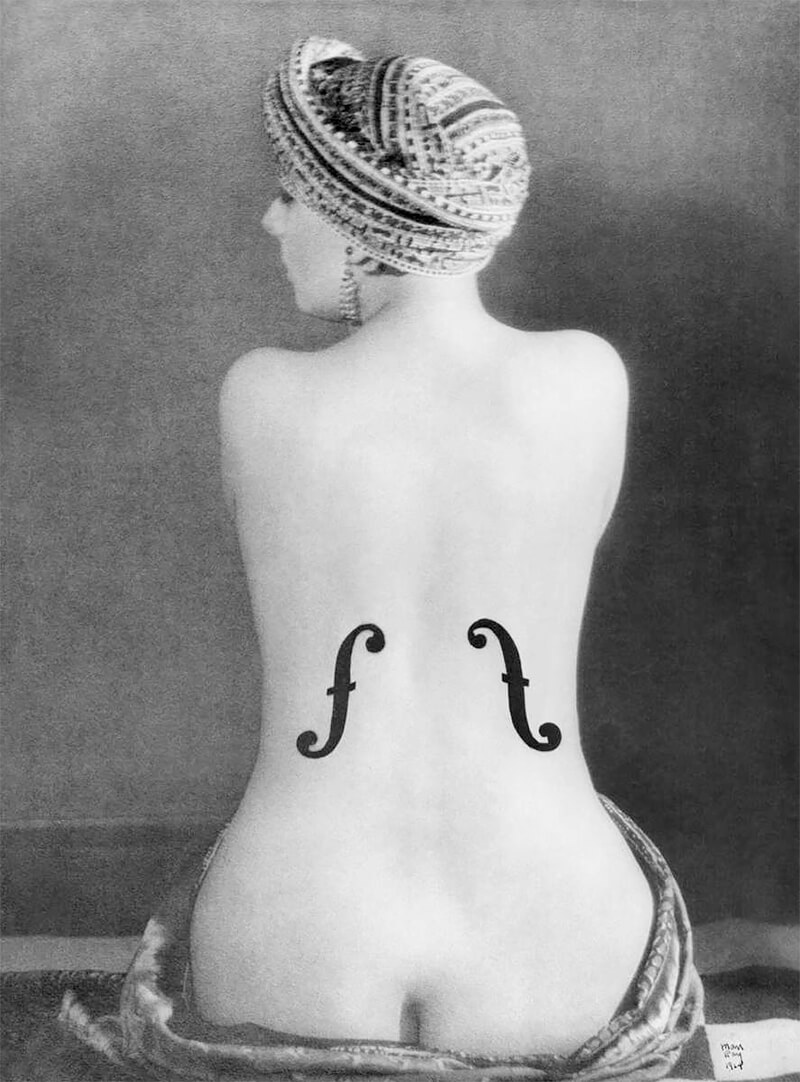
Le violon d'Ingres, 1924 © Man Ray
Source: The Art Story
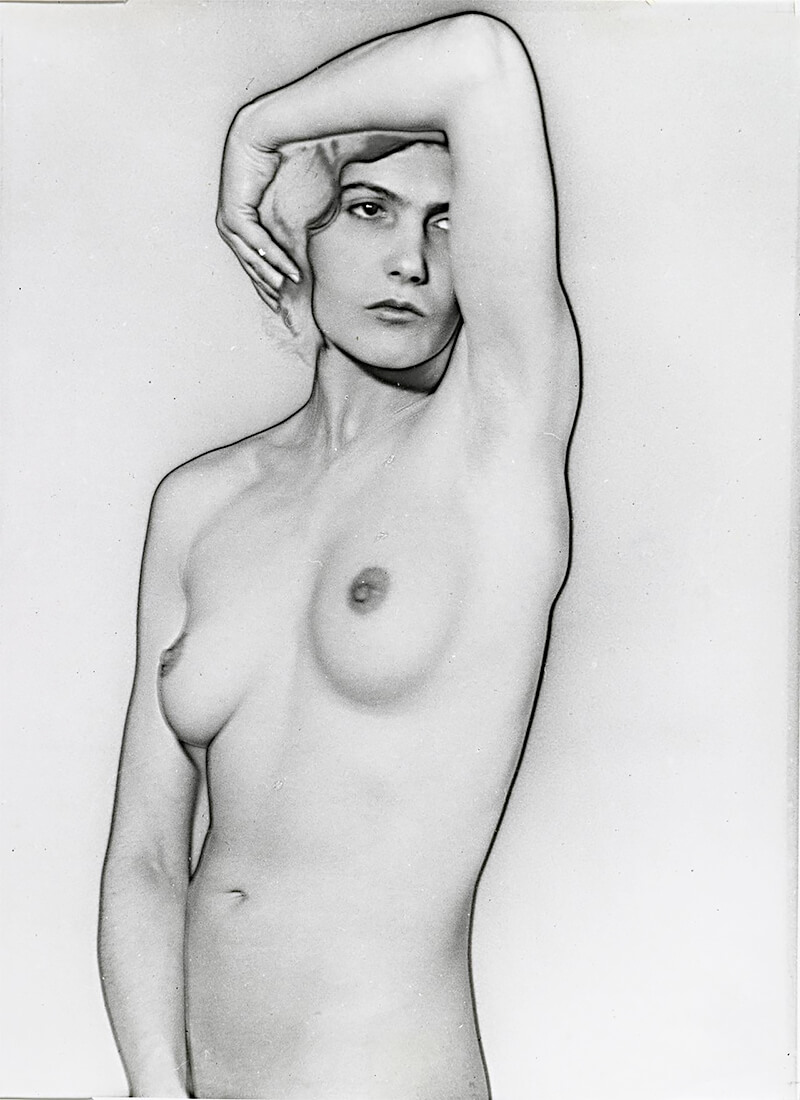
No title (Nude, solarisation), 1927 © Man Ray/Man Ray Trust/ADAGP
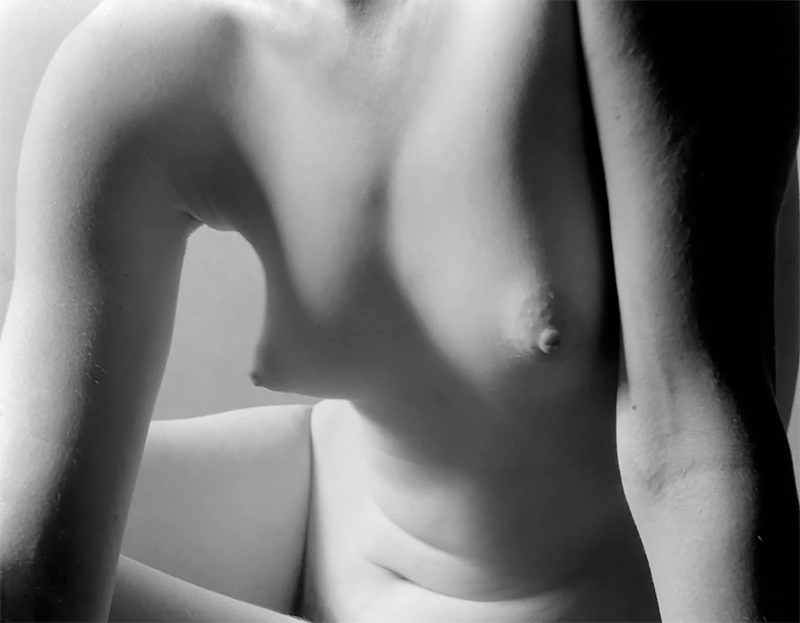
Helen 2, 1928 © Imogen Cunningham Trust
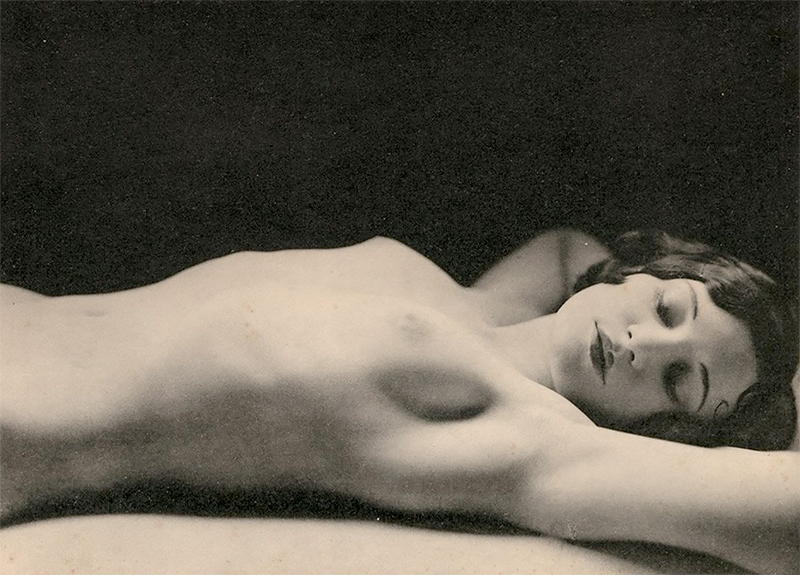
Etude de nu, 1930 © Germaine Krull
Source: The MET
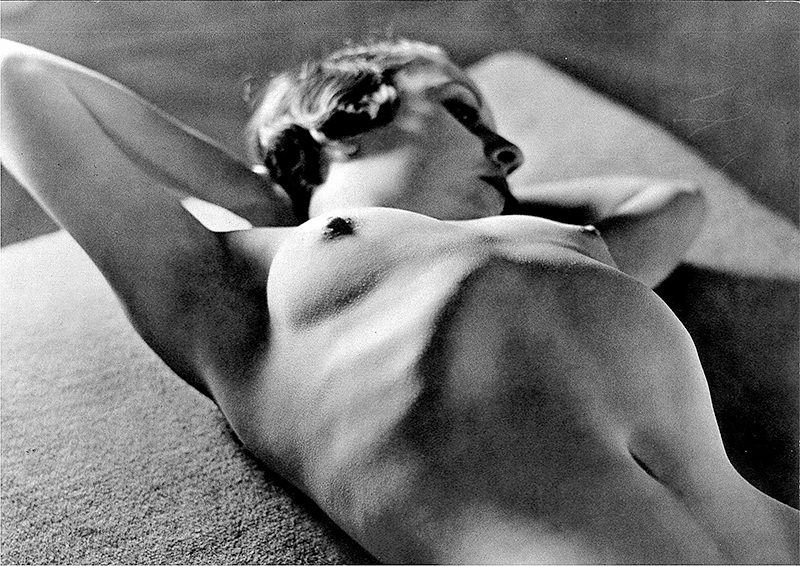
Nude 3 (Femmes 1933) © Sasha Stone
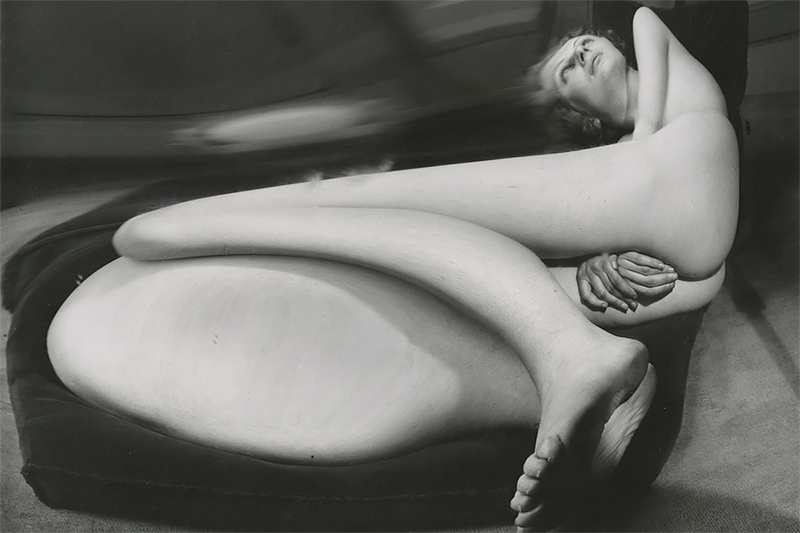
Distortion #40, 1933 © André Kertész
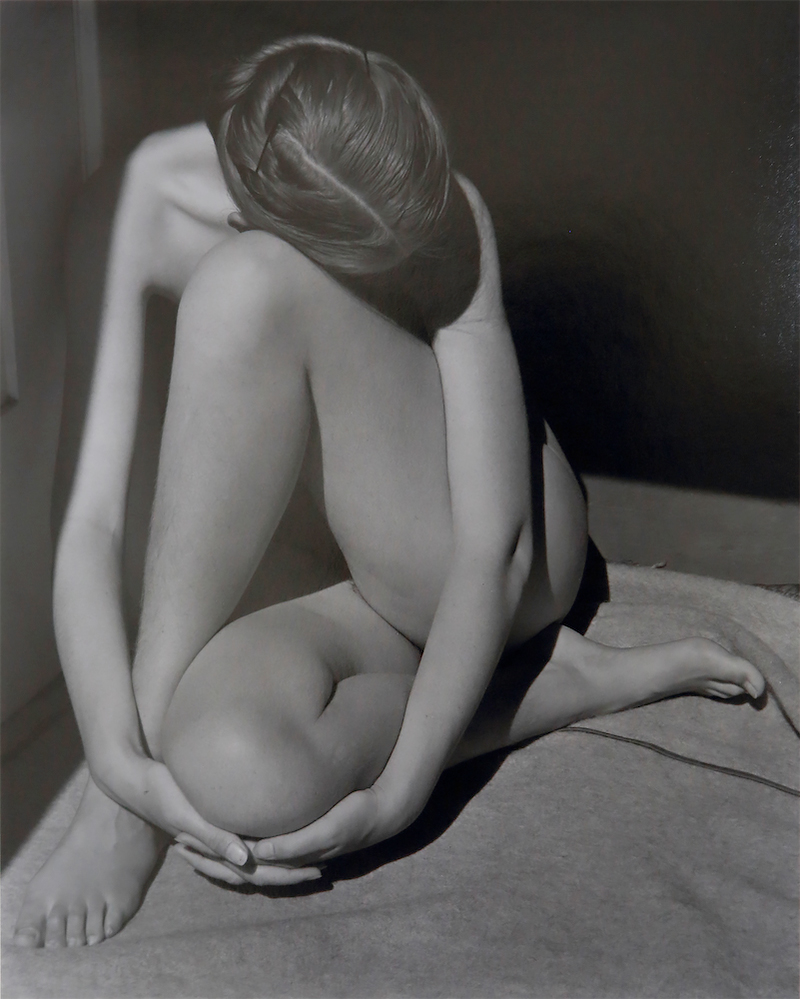
Nude (Charis in the doorway), 1936, Edward Weston
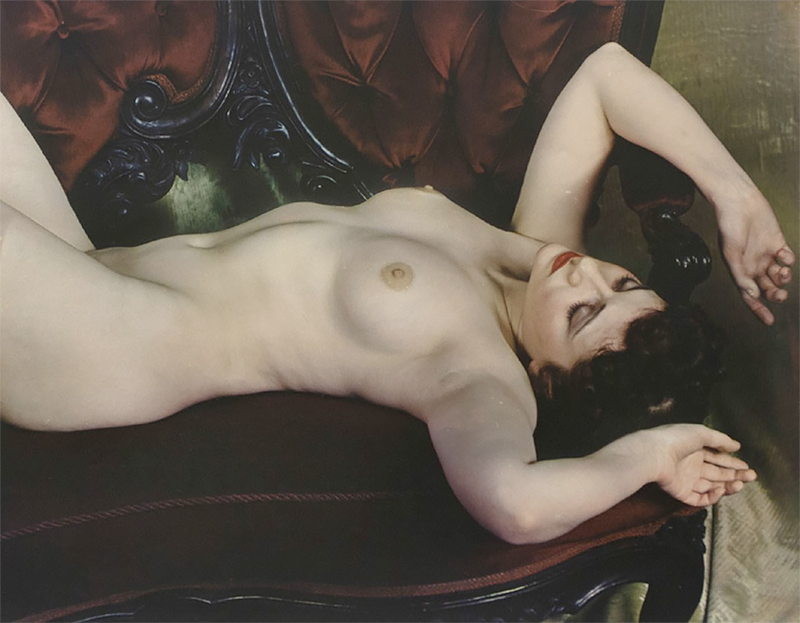
Nude Lying on Love Seat, c. 1936 © Paul Outerbridge
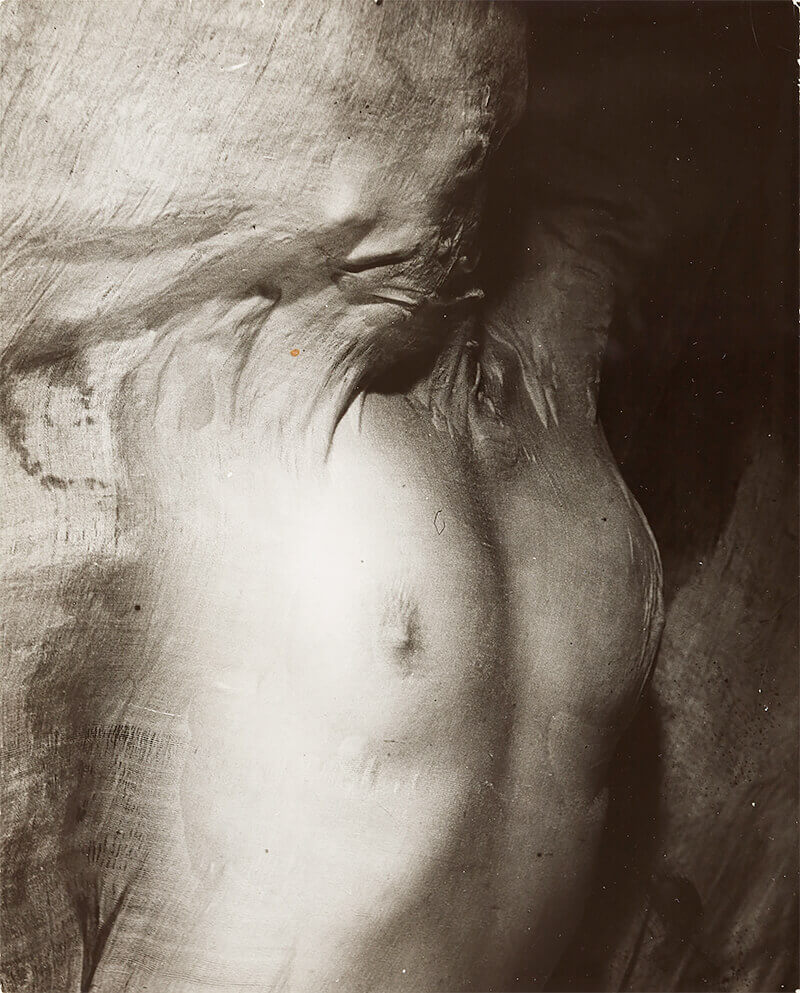
ude Under Wet Silk, Paris, 1937 © Erwin Blumenfeld
This Golden Age of photography was suddenly stopped by WWII. The short period between the two world wars remains one of the richest in photographic history.
